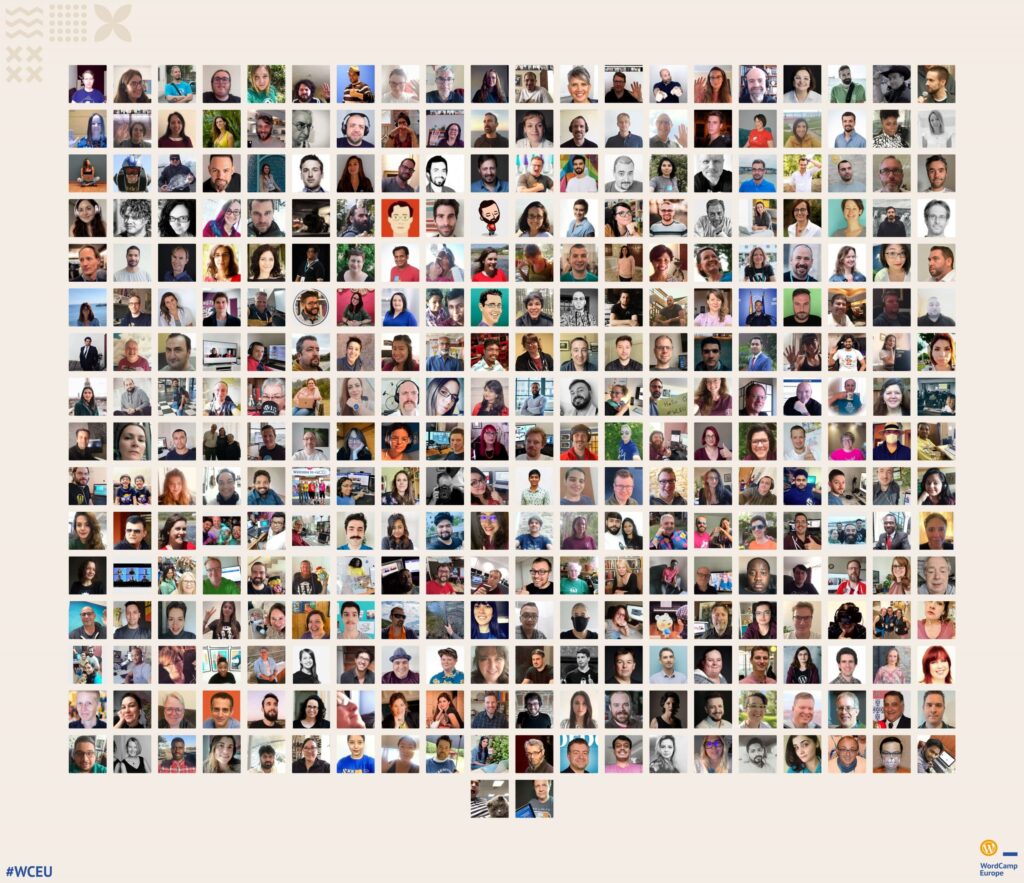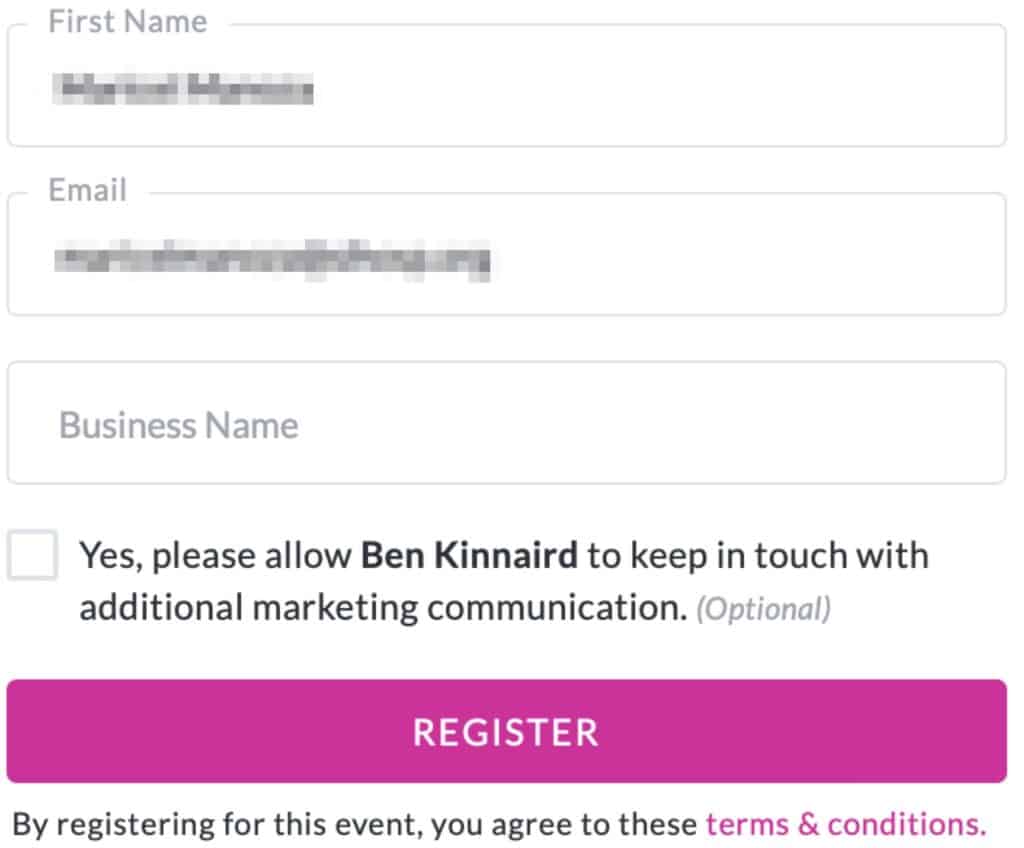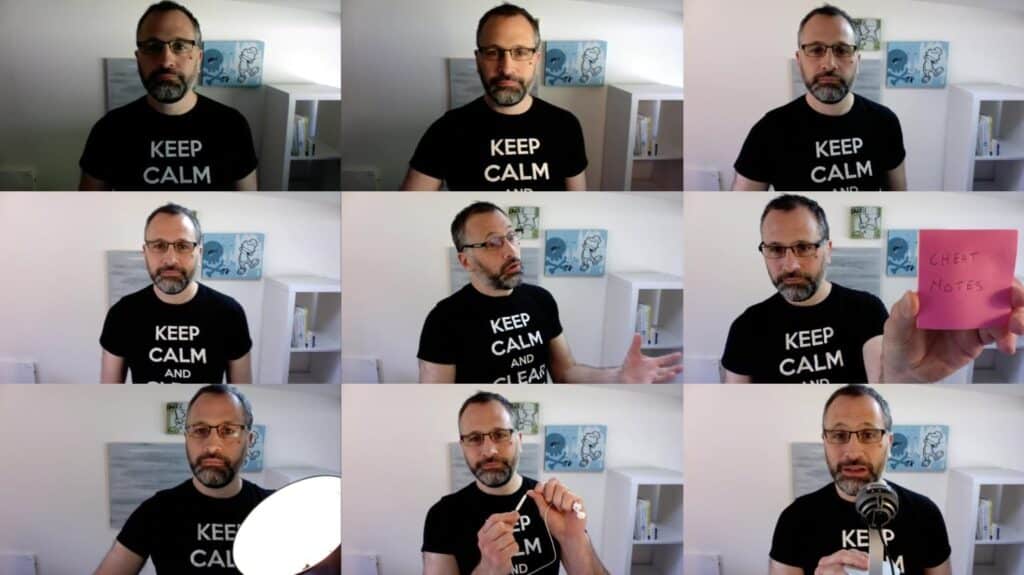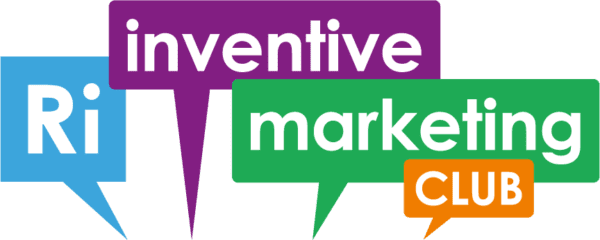How to Create a Bulletproof Blogging and Content Strategy – BDF2020
The recording of my webinar for Bath Digital Festival 2020. Here’s the original event blurb
‘Ben will share how to develop a bulletproof content strategy to boost your social media activity and help you get found online through search engine optimisation.
You’ll learn:
– A basic strategy you can adapt
– How to focus on what’s important
– Tips for generating ideas and making time around work
– SEO techniques that could get you onto page one’
Looking forward to Christmas
Fiona Scott from totalswindon.com asking me about our future. N.B. Original post removed so I’m pasting the full original here.
What does Christmas 2020 mean for you in your business? I usually have a rush of project enquiries as we move into December. It seems to be a convenient deadline as people get everything squared away before they break for the holidays, but it’s not a crucial sales time for us.
Personally, I look forward to the Christmas break. I relish the peace from email in the week before and after Christmas. I often use the time to clear the decks to prepare for the new year.
January to March is a crucial time for us as people are buzzing with new ideas and enthusiasm for marketing their business after the Christmas holidays. So I have to be ready to manage the enquiries and work at that time.I’m not concerned about COVID-19 restrictions and potential lockdowns as we work online exclusively and have done for the last ten years. However, I have been adapting to Zoom networking online, so this will be an area I need to improve on.
Outside of my Marketing Club’s monthly webinars, I’m looking to run online Website SEO and Website planning events. These topics work well with live demonstrations where I can have fun with the audience. No dates are planned yet but keep an eye on my website for details.
Rather Inventive Marketing is actually 11 on the first of December. I really cannot believe we’ve been running for some long!
At the start of the first lockdown, we offered free membership of our Marketing Club to any charity forever. Next year I’d like to support charities directly with free consultancy and am looking for charities in the Cotswolds that would like help with their website or marketing.The biggest challenge has been to not to be complacent about the future. I’ve been fortunate to get through this year in a financially stable position, but things could have been drastically different.
I’m also very much aware that 2020 has been a metaphorical kick to not wait for good things to happen. I just have to put in the hard work.I feel positive for Rather Inventive but I know that charities and shops will have many challenges over this Christmas.
I can only hope that through this adversity, we’ll see innovation and be able to move beyond this world-changing year in better shape and working together.
The importance of testing an app with real data
Suzanne Scacca at Smashing Magazine on why it’s crucial to help your customers truly test out your app by helping get their data in it.
They’ll be more confident in their decision.
With complete and accurate data transferred into your software, users actually see how valuable it is soon after signing up. This leaves little room for second-guessing their decision, which leads to greater satisfaction overall with the product, and ultimately more money for your business.
We’re currently working with a client who is building a web app where the end user needs to input their live data to truly evaluate the software. It’s a stumbling block, as inputting the data is time consuming and not a job the customer would relish doing. Worse yet, is that the data is often from paper records or needs to be collected in an audit.
To get around this we’ve discussed providing an initial import of a small sub set of data for evaluation along with a personal tour of the software. Then if the customer subscribes to a paid plan the full data set can be added for free. If they have incomplete records then a low cost physical audit can be used to collect the remaining data.
This initial investment into your customer will pay you back quickly with fewer abandoned trials but it can also increase the likelihood of being referred to others.
Reducing the options
Paul Boag on Twitter
Hick’s law states that there is a predictable increase in the time it takes somebody to decide, as the number of options goes up. Yet we regularly bombard users with options on our websites.
Keeping options simple and straightforward on your website rarely works against you. In fact, I believe you are doing your customer a favour by reducing the need for weighing up options before proceeding with a transaction.
Paul’s, tweet reminds me of a post Lou wrote (back in 2015!) called Drowning in Choice.
Barry Schwartz in his book The Paradox of Choice, says that at the point where the effort to make an informed decision overtakes the benefit of having a choice, then “choice no longer liberates but debilitates. It might even be said to tyrannise.”
Why Information architecture is important
Carrie Webster writing for Smashing Magazine.
‘Whether it is a website, a software application or a smartphone app, it’s about first designing the structure of how your information is organized, and then translating this into a logical navigation hierarchy that makes sense to the users who will be accessing it. In this world where we can sometimes feel as though we are drowning in data, information architecture provides us with a logical way of organizing this data to make it easier to locate.’
Content structure is a core part of my web design process and in a large part informs the visual design of the website.
In my early design days I used to draw out the site using dummy text or images in illustrator, get the design signed off by the client then build the HTML and shoehorn in the content. We’d always get it to work but there was a lot of refactoring the design to fit. It’s completely backward when you think about it but it’s how most of the industry worked.
If you think content structure on a website is important (and you really should) then after you’ve read Carrie’s article you should also check out the book Content Design by Sarah Richards. It’s an easy read and explains why designing your content will have the biggest impact on your site visitor. Her experience is informed, in part, by her time at GOV.UK.
Google Shopping now free in the UK
From mid October you can list your products in the Google Shopping tab for free.
‘Today we announced that we’re bringing free listings to the Shopping tab in countries across Europe, Asia, and Latin America. Just as we don’t charge sites to be part of the Google Search index, listings for participating retailers are eligible to appear in these results at no cost to them. Paid listings will continue to appear in ad slots and will operate in the same way as Shopping ads do today.’
I’m glad they’ve made this change. This used to be the norm for the product feed until they made it ad supported only.
Shut up and listen
Jason Fried’s forward to Bob Mesta’s new book ‘Demand Side Sales 101‘ has a few great sales tips. I cannot wait to read the Bob’s book as I’m an avid follower of JOTB.
‘It wasn’t until my manager encouraged me to shut up, watch, and listen. Give people space, observe what they’re interested in, keep an eye on their behavior, and be genuinely curious about what they wanted for themselves, not what I wanted for them. Essentially, stop selling and start listening.’
This can work in any relationship or negotiation. It’s something we all find hard, me included. Here’s another nugget
‘They didn’t care about the precise weight, or that this brand shaved 0.5oz off the model this year compared to last. They didn’t care what the color was called, only that they liked it (or didn’t). The tech- nical qualities weren’t important – in fact, they were irrelevant.’
Don’t focus on the features, focus on the benefit to your customer. It the case of shoes it could be how they make them feel not what they can do.
Listening is a crucial attribute of a successful sales person. If you listen well, your potential customer will always tell you what they want and how you can sell it to them.
Recovery Workshop: How to connect with customers online [video]
Part of the business recovery workshop series by Start And Grow Enterprise
The pandemic has moved us to new ways of doing things. We’re having to adapt and change to meet the needs of our customers, which now include meeting the social distancing requirements. So how can you make the most of the online tools that are available to both market and sell your business virtually?
In this webinar, I will share some great ideas on using online tools such as Social Media, Video and Augmented Reality (AR) to connect with your customers so you come out of this stronger together.
Better lighting and other effects in Zoom
I’ve been waiting for a feature to compensate for poor lighting for a while. This and many more features now available in Zoom.
Feel even more video-ready with granular control over the intensity of your touch-ups and lighting adjustment, so you’re well-lit in any lighting. Change the brightness of your panel and amount of skin smoothing to put your best video frame forward!
These controls will never make up for having good lighting In the first place. I made a little image grid to show what a difference a simple light makes.
I wish the Mac had better built-in camera controls to adjust exposure, brightness and other factors that can affect the quality of the video. I currently use the app iGlasses to make these adjustments for my webinars but for security reasons this never worked in Zoom. I’m so pleased they added these extra features.
Don’t worry about people stealing your ideas
Worry about not making your ideas happen in the first place.
When I was a book packager, we ended up publishing about 120 books and pitching another 1,000 that were never published. In all of that time, I can only remember one of our ideas (it was a big one) being stolen from us and published without our participation. That code of ethics created a feeling of intellectual safety. But, at the same time, it was our successful books that were copied the most–and that copying was not just a symptom but often a cause of their success.
If there is one person worth copying, it’s Seth.
Relatedly there’s a good book I listened to called Information Doesn’t Want to Be Free by Cory Doctorow. He argues that by protecting your idea with wrappers of digital copy protection you’re stopping your work spreading and being bought by more people than if you didn’t have any copy protection at all.
Apple’s App Clips
Announced in Apple’s developer conference keynote a couple of weeks ago was an interesting feature for new apps that enables a small functional portion of your app to be downloaded when triggered by a QR code or NFC tag. Apple’s developer guidelines explain more.
‘Consider creating an app clip if your app provides an in-the-moment experience that helps people perform a task over a finite amount of time. For example:
– A rental bike could come with an NFC tag that people scan to launch an app clip that lets them rent the bike.
– A coffee shop could offer an app clip for fast advance orders that customers launch from a Smart App Banner on the coffee shop’s website. Customers could share a link to the website from the Messages app, which recipients then tap to launch the app clip from within Messages.
– A restaurant could let diners launch an app clip from the Maps app or a suggestion from Siri Suggestions, or scan an NFC tag at their table to pay for a meal.
– A museum could have visitors scan visual codes on labels next to displayed works to launch an app clip that reveals augmented reality content or provides audio commentary.’
This is perfect for all those parking meter apps that require far too much information to signup when all you want to do is pay and run.
Privacy report coming to Safari
Lily Hay Newman at Wired
‘In macOS Big Sur, Safari will include a specific “Privacy Report” to break down what specifically Safari is blocking and give you more insight into which trackers are cropping up in your daily browsing.’
This means that any tracking pixels and code, including Google Analytics, will be clearly listed for all Safari users when they upgrade to macOS Big Sur later this year.
Shaming websites into reducing or removing all trackers on their site is the best way to improve the tracking and data leeching situation. Cookie policies and popups do nothing but confuse the situation and, like many agreements and terms of service online, people quickly click through to get to the information they want.
Using Ghostery in Chrome to test on our site for trackers, it shows we have two trackers. Google Analytics and DoubleClick. The Double click tracker is used by YouTube when we have embedded videos and can be removed by making sure you embed the videos with ‘Privacy-enhanced mode‘, I must admit I thought all our videos were set to use this, it appears a few weren’t. I’ve added a script to fix all videos on our site
Google Analytics will stay for now but I am looking at a way of compiling basic tracking reports locally on the server and not sending this data to Google.
WordCamp Europe 2020 presentation notes (in progress)

My notes from the online version of WordCamp Europe back on the 5th June 2020. As I watch the videos and add my notes I’ll update the content on this page.
Friday – Track One
Sustainable freelancing – Wendie Huis in ‘t Veld (2:15:23)
- Take care of yourself – Look after yourself like you would look after a child
- Set healthy boundaries – One example Wendie gave was asking for all website content to be provided upfront before she begins a project, this helps her build websites on time.
- Make things easy on yourself – Remove or delegate jobs you don’t like, automate what you can, systemise what you have to do
- Give yourself permission to make mistakes – Write permissions down, it’s a helpful reminder
- Get support with other people – Have people you can talk to and that will hold you accountable
- Make time to have fun
- Make changes in small steps
WordPress performance – Hristo Panjarov (2:58:58)
- Keep your plugins and WP core undated. Many updates include speed enhancements
- Make sure using Opcache
- Preloading in PHP 7.4 brings further speed improvements
- PHP 8 due for release later this year which brings further speed improvements
- Use WebP formatted images, can be 2-3 times smaller than JPEG
- Load only critical CSS at the start of the page. Everything else should load as needed. Can be difficult to implement manually
- You should minify JS, CSS and HTML files if possible
- User server-side full page caching such as Varnish or NGINX
The art of building better websites with science – Ruth Raventós (3:44:03)
- What is the goal of your website? Get more visitors or increase conversions
- CRO (Conversion Rate Optimisation). Either blindly make changes and hope for the best or apply a process and make changes based on results
- In CRO: Your opinion doesn’t matter, and hacks and best practices don’t always work
- CRO process – Plan -> Measure -> Prioritise -> A/B test
- What is your customer funnel? How do they find your site? What do they do on your site? Do they take action? Are you measuring this?
- Assess your page against five criteria and how you can improve them: Relevancy, Clarity, Friction, Distraction, Value
- Use Google Analytics to set up measurement and KPI tracking. Also, identify leaks, where do people who don’t buy go to
- Use scroll maps, click maps and pointer heat maps, customer surveys and user reviews are also really useful to see exactly how people use your site
- Look for easy wins and changes that will create the most value
- Review the issues and propose a hypothesis
- Decide on a change and split the traffic between the page variations
- Not all of your ideas will be successful. For example, tried adding banners and video to their pages and these were either ignored or did not increase clicks. So make changes but test the results.
- Run tests for a full business cycle. This depends on how long it takes people to make a decision so could be a week to a month.
In conversation with Matt Mullenweg (4:29:10)
- A short demo of some upcoming improvements to the block editor
- Then a Q&A
I’m really sorry – Our webinar registration form just got spammed!
This afternoon a registration form for an upcoming webinar of mine was spammed with over 4100 email addresses from a spam bot. If you were one of that number then I’m really sorry that you just got an unsolicited email from Demio, the webinar software we use, booking you onto a webinar. Your email and details have been removed and Demio is working on a fix to prevent this in the very near future.
Here’s what I know
The first I knew about this was from an email at 14:11 from an ‘attendee’ asking, quite rightly, why they had been registered for this event and where had I got their details from – I didn’t immediately have an answer for them.
I jumped straight into Demio and confirmed that we did indeed have spam registrations. My first thought was to stop further registrations but there was no obvious way to do this except to reduce the number of attendees down to 1.
I then spoke to Demio to find out what was going on and to make sure that this wasn’t a data breach. They confirmed it was from a social media spam bot NOT a security breach or hacking, and removed all false registrations in 20 minutes. They are also set to release fixes to prevent this soon have also released fixes to stop this happening again*.
I even received our first ever negative feedback through SayHola. Rightly so, this person was pissed off.

The GDPR reference is from the signup form enabling me to communicate with the registrant outside of any marketing for the event.

To everyone effected, I’m sorry that our event spammed you. I hate spam and I hate that you got this.
*Update from Demio
We were able to put in a fix to prevent any of those bots from registering to any Demio event again, and we’ve also removed any bot registrations from your Event. You’re good to go for this event!
Also, in the next few days we have an update that will create more restrictions for registration (checking emails etc) that will further prevent bots!
How to start an argument on Twitter
Paul D McGarrity step by step observation of a bot on twitter sowing the seeds for social division.
‘4) The trap is set. The tweet gets attention, a few retweets. Most are quote tweets with outraged reactions which do two things- they allow people to say ‘look at what THEY all think’ and it removes the casual viewer from the original account by one click. It ends here, unless…’
Look out for these bot accounts. There aren’t always easy to spot but if they have very strong views, low or no followers, check out their profile and see if makes any sense. If in doubt, don’t just retweet it.
I spent at least 15 minutes reading through Paul’s thread replies and checking out his profile before I was happy sharing this. Gosh, I hope he isn’t a bot!
How to look great on Zoom

A couple of tips from my last webinar with Heidi on how to look good and come across confidently when are presenting on zoom.
‘The most important thing you can do is have good lighting, particularly on your face.’
- Use a window or lamp to light up your face
- Use headphones to prevent echo
- Talk to the camera so people feel you are talking to them
- Write your talking points on a sticky note so you don’t have to look down and refer to your notes (thanks to Jonathan Mehan for this tip)
- Mute if you are not talking. This prevents echo and allows you to type without disturbing others
- Use dedicated Mic and Camera if you can. You will sound and look better.
Without ambiguity: Black Lives Matter
Seth Godin leaving no doubt.
‘The systemic, cruel and depersonalizing history of Black subjugation in my country has and continues to be a crime against humanity. It’s based on a desire to maintain power and false assumptions about how the world works and how it can work. It’s been amplified by systems that were often put in place with mal-intent, or sometimes simply because they felt expedient. It’s painful to look at and far more painful to be part of or to admit that exists in the things that we build.’
Also watch this if you missed it.
Uncomfortable Conversations with a Black Man
I’m taking my headphones out and will try to listen.
Inside the weird, get-rich-quick world of dropshipping
From Wired
‘“My main gripe is that you’re selling a course for $6,000 to a person from middle America who’s put all their funds into this, and you’re teaching them to sell avocado slicers online with 40 other people who are also selling avocado slicers,” he says.’
Get rich quick schemes almost never work out except for the people who start them or sell the courses. Much like MLM schemes and too-good-to-be-true share offers.
It’s a dirty area and best avoided.
ICO Code of Practice to protect children’s online privacy
Been in my drafts for a couple of months but it’s still worth sharing.
The Information Commissioner’s Office published an Age Appropriate Design Code, it’s a set of standards that online services should meet to protect children’s privacy.
That means privacy settings should be set to high by default and nudge techniques should not be used to encourage children to weaken their settings. Location settings that allow the world to see where a child is, should also be switched off by default. Data collection and sharing should be minimised and profiling that can allow children to be served up targeted content should be switched off by default too.
This design code should apply to all users, not just children. But it’s a good start.
When it comes to children (and vulnerable adults), I’m less concerned about tracking and personal data retention but find it more egregious that they are taken advantage through psychological manipulation to spend more money or time in a game or service which has an overall objective to keep people hooked by giving them just enough of something they like to keep there endorphins flowing.
Free marketing help for charities
I hope everyone is well and staying safe.
Many of us at Rather Inventive work remotely so for us it’s (mostly) business as usual. But for some it’s going to be a period of hardship and this will be especially true for charities.
I don’t have much to offer so I’m going to make our Inventive Marketing club free to all charities for now and into the foreseeable future. I hope this small gesture will equip them with the tools to find more people willing to give and support their good work.
If you know of a charity who would benefit, send them over to my club page. Or ask them to contact me and I’ll get them setup.
I wish you all the best and if I can be of any help (in any way) do let me know – Take care
Ben
How to avoid crappy clients; a guide for small business owners and freelancers
In the beginning, when the business was starting and I would have done anything to get work, I naively thought there was no such thing as a bad client.
I suspect my gullibility was obvious because I was soon approached by one individual who was willing to let me write a sample web page for him, on the promise that if he liked it he’d pay me a good rate.
He also promised that there would be ‘plenty more where that came from’. I couldn’t believe my good fortune. I spent an inordinate amount of time writing and re-writing to produce my very best work. I sent it, waited for him to come back to me with an offer of more work and I never heard from him again.
I am pleased to say that these days I am a little more discerning. I now have a core of clients who wouldn’t dream of taking me for a fool and are a pleasure to work with, but I’ve learned a few things along the way, like how to recognise a lousy client when they pop up on my radar.
There’s no escape
Crappy clients don’t limit their cheating ways to newbie writers. It doesn’t matter whether you’re a photographer, a website designer or an accountant, you will, at some point, come across a crappy client. He might try to trick you into doing work for free to ‘build your portfolio’ or he may string you along, with promises of work or payment. He might be the type who will pick up on every minor error, be difficult or confrontational, all in an attempt to reduce your price.
Recognise crappy clients
There are usually signs to warn you of trouble. If you can answer yes to any of these questions then you probably want to steer well clear;
- Does he know what he wants or does he change his mind several times before he decides? You could be doing an awful lot of unpaid work before he’s satisfied
- Does he consider a contract to be unnecessary?
- Is his communication inconsistent? – He may go ‘silent’ when it’s time to pay the bill.
- Does he promise future work, on the back of a freebie?
- Does he challenge your fee? Don’t confuse this with the perfectly reasonable request to ask for less work for a smaller fee if he has a limited budget but if he says you’re ‘too expensive’, walk. You know the value of your work, don’t expect less.
- Does he expect you to work for free to ‘build up your portfolio’?
- Does he act as if he owns you, expecting you to be available 24/7?
- Does he bad-mouth other businesses? – don’t think you’re the new hero; it’s only a matter of time before he bad-mouths you
This is not an exhaustive list. Your gut will know when you’ve encountered a crappy client.
Trust your gut
As a business owner, it seems counter-intuitive to turn down work but if your initial thoughts are that a potential client could be trouble, trust your gut feeling. Otherwise you could end up with one who will drain your enthusiasm with his unreasonable demands or his crafty ways. You will feel violated, taken for a ride.
Stay clear
There is not enough time in the day to waste your time on clients who frustrate you so much that you want to tear your hair out and sob into your bath suds every evening.
Running a business or working as a freelancer takes time and energy. It can be stressful enough without having to justify your fees and chase after payments. Stay away from clients who make excessive demands, ask for the impossible and constantly complain. These clients can hinder your business and steal your soul if you let them. Instead, focus on the good, worthy clients; those who value your work and your business.
What about you? Have you had much experience with lousy clients? What did you do to get rid? Have you had a warning sign that a client may be from hell, but who turned out to be a good client? Let us know.
3 simple steps to find your ideal client
Would you love to find your ideal client? Here are 3 steps that will increase your chances, no matter the size of your business.
1. Who are they? Identify your ideal client
This first step was suggested to me by a fellow copywriter and friend a few years back. We were sitting having dinner one evening. I was bemoaning my lack of work, and so she suggested that I write a profile of my ideal client. She told me to think about exactly what he or she might look like. What kind of work does he do? What are his likes and dislikes? What does he want, expect, and hope for in life and work?
I was skeptical about how writing a list might help. But it couldn’t hurt to try, I reasoned, so I sat down and made a list, giving as much detail as I could. From the kind of work he did to the radio station he listened to, the number of children he had and his keep-fit habits – I listed everything. I then gave it no more thought.
Now, it could be pure coincidence, or it could be some magnetic vibe I sent out into the universe, but the very next evening I received an out-of-the-blue invitation to connect on LinkedIn, which I accepted graciously adding a message asking if and how I could help. To cut a long story short, that LinkedIn member is now one of my favourite customers. He gives me plenty of work, pays on time, and is generally a pleasure to do business with.
Obviously, this strategy doesn’t come with a guarantee. And it’s foolish to think that by doing this exercise your ideal client will magically materialise but it’s worth a try, isn’t it? The idea of writing a client profile is not new. Salesmen have been using this strategy for decades to find their clients.
The idea is that it’s difficult to go looking for something if you don’t know what you’re looking for. But if you know exactly the kind of person your ideal client is then it makes the job of finding him a whole lot easier. If you have no idea where to start, think about your past successes. What kind of client did you get the best results from? Write a list of his attributes.
2. Where are they? Find out where your ideal client hangs out
Let’s say you’re looking for a manufacturer to sell your metal press machines to.
Once you’ve created a list of characteristics of the manufacturing executive, you’ll have a little more to work with. You’ll be able to surmise, based on his job, his demographic, his hobbies and his motivations, what social media platforms he uses, if he uses them, or the events he might attend. Your manufacturer might use Twitter to keep himself up-to-date on product trends. He may attend manufacturing trade shows or conferences.
Does he frequent Facebook or Twitter? Seek out companies who could become your ideal client. Follow them and start conversations. It might come to nothing, it could lead to something. You never know. Chat over coffee at a networking event or a conference.
Be generous with the people you meet in these communities because you never know who might turn out to be your ideal customer. Whether online or in person, introduce people, offer advice and support, and recommend resources and tools. If you’re a service provider, then you could offer short consultations – Rather Inventive, for example, offers free 1-hour consultation of their marketing service – it might not lead to work, but it will all help to pull people towards your business, establish you as the expert in your field and help you to get more referrals.
3. What do they want? Focus on them when marketing
When you have a clear picture of the type of customers your business should be targeting, then you can create a strategy with these ideal customers in mind, rather than wasting time and resources on unsuccessful marketing efforts. You’ll know exactly what message, product, services, sales and support you need to put across to meet his needs, wants or desires.
Once you have your ideal customer in your grasp, figure out what they value most in a relationship with a business like yours. What do you need to do so that your new client doesn’t get the wondering eye, and start looking for another supplier? Optimise whatever it is that gives you the competitive advantage.
Your ideal customer is out there, somewhere. But he’s going to be tricky to find unless you know who he is, where he hangs out and what he wants. Take a few moments to consider these and you’ll stand a much better chance of finding him.
—
Photo: Image Catalog, Writing in Notebook at Desk
Shall we take this outside?
A recent study in Australia has shown that spending time outside can significantly benefit physical and mental health. Ok, ok, I can see your eyes rolling – this is not ‘new’ news. What is new is the swathes of workers who are adapting their 9-5’s in order to embrace the great outdoors, using the benefits that nature brings to tackle work-related problems.
In our episode 9 of our podcast, Ben and Al speak to Jon Johnson, an organisation development guru who has pioneered a novel way of overcoming the metaphorical ‘brick wall’ that many of his clients face when trying to solve issues in the office. A keen mountaineer in his student days, Jon compares the notion of running a business with the idea of going on a physical journey.
When we climb to the top of a mountain, the view that greets us can offer an incredible perspective which we didn’t necessarily have at the start. In order to apply this metaphor to real-life, Jon invites his clients to join him on a walk – an actual walk – that involves some decision-making and trouble-shooting along the way but will ultimately result in a great view and a much clearer perspective on the business issues in question.
This concept is not dissimilar to the global movement, Street Wisdom, a social enterprise with ‘a mission to bring inspiration to every street on earth.’ These walking adventures are led by volunteer facilitators or if you can’t attend a workshop you can download the audio guide. In just three hours of walking and wandering, participants have ‘resolved problems that have dogged them for years, found new business ideas, changed careers, discovered new directions, and learned how to deal differently with living, learning and loving.’
Research shows that increasing urbanisation has led to cities becoming ‘epicentres for chronic, non-communicable physical and mental health conditions’. Green spaces are crucial in combatting the health threats that urban lifestyles pose. And for those of us stuck in sedentary jobs, it has been proven that by visiting outdoor, green spaces for 30 minutes or more, at least once a week, can reduce high blood pressure in a community by 9% and depression by 7%.
What are you waiting for? I’ll get my coat…
—
Photo credit: Helen Creese, Baynhams Copse
Rather Inventive’s Ultimate GIF Guide
My inbox is currently full of ‘Ultimate Gift Guides’ for just about every living object known to man; gifts for him, gifts for her, gifts for grannies, gifts for kids. Dogs, budgies and inanimate objects are now all catered for at this time of year. New offers ping in on a daily basis with alarming velocity, reminding me of my complete inadequacy as an ‘Organised Christmas Shopper’. No I haven’t started yet. And no, I don’t have a list. I don’t want to dwell on that….

…so in order to avoid the impending doom of my ‘last-minute-shopping’ future (when you spend waaaaay to much on gifts that no-one actually wants because you didn’t give yourself enough time to source anything half decent), I decided to lighten my spirits by creating the Ultimate GIF Guide (helpful blogger or procrastination at its finest?!).

Er, so – can I put a GIF in a Christmas stocking?
No! A GIF is not a gift in the physical sense of the world – it just sounds like one, minus the ‘t’. But as an avid social media user, a GIF does feel like a bit of a treat. You see, GIF is the acronym for Graphics Interchange Format, which is a very boring name for something that’s pretty cool. It refers to a file format that supports both static and animated images. They are essentially quick videos that loop and don’t require a play button.
When is a GIF not a GIF?
GIFs are soundless, play in a loop and are typically just a few seconds long. Videos, by comparison are usually longer with sound or music.
What do I use a GIF for?
As well as spreading a little light-hearted cheer, GIFs can be used quite cleverly across your social media platforms. Like emojis, some GIFs allow you to be a bit more playful with your tone of voice. They can also help your posts stand out amongst the tirade of tweets and pictures that appear on Twitter, Facebook and Instagram. GIFs can have a serious use, too – for instance, they are a great way of showcasing products, animating data and creating ‘how-to’ guides and tutorials. I particularly like to use them to convey a message which requires more than 140 characters as a GIF will not take up any character space on Twitter – hoorah!

We love the tutorial GIFs
over on astutegraphics.com
Sold! Now, where can I find them?
I love Giphy. It’s full-to-brimming with gorgeous GIFs to suit all needs and occasions! You will also find GIFs at Tumblr and Google Image Search (just go Google, select ‘Images’ and at the bottom of the page you’ll see ‘Advanced Settings’. Click, then click on the ‘Type’ option and select ‘Animated’).
If you’ve got a bit more time and you’re feeling creative, have a go at making your own using these tools:
Happy GIF-fing!! (don’t ever say that out loud…).


